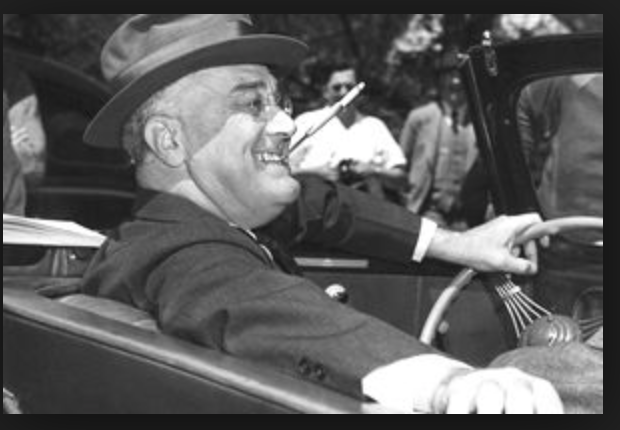
Packing the Supreme Court or “The Switch in Time That Saved Nine”
A number of the announced candidates for the democrat nomination for President, have proposed changes to the current structure of our government. Some are foolish, some wild, some weird, some have been tried before. Such as Packing the Supreme Court by adding more justices.
One particularly looney proposal is to have a 10+5 make up. Ten appointed by the President and five by the Supreme court themselves. There is one minor problem. The Constitution provides that the President appoints Supreme Court Justices. They don’t appoint themselves. But those type of moronic ideas aside, could the number of Justices by increased from the traditional nine?
The answer is yes.
In 1935, Franklin Roosevelt had just been re-elected President by the largest landslide in history. The country was looking to him and his programs to lift them out of the Great Depression. They gave him an unquestioned mandate to do what needed to be done. And they gave him a Congress to help him. After the election, his party dominated both houses of Congress, by large margins.
But he was worried. He had the mandate and the agenda, and two branches of government under his effective control. However, a reactionary Supreme Court was threatening to lay waste to the programs he had steered through Congress to lift the nation out of the Great Depression.
He was right.
Over the next few months the Court found over a half dozen of Roosevelt’s programs unconstitutional. In private he accused the Supreme Court of adopting a “horse-and-buggy definition of interstate commerce.”And it appeared his new Social Security and National Labor Relations Acts would suffer the same fate.
Roosevelt reacted. He came up with a plan. A Court Packing Plan. Within two months of the inauguration, he struck. In a surprise move he asked Congress to authorize him to appoint a new justice to the Federal Courts for every justice over the age of seventy. The average age of the Justices was seventy-one. His plan would give him six new Supreme Court appointments and over forty new lower court Justices.
His proposal was and is Constitutional. Nothing in the Constitution requires that the number of Justices be limited to nine. It has, at different times in our history, been more and been less than nine. Nor does the Constitution specify any standards regarding qualifications to serve as a Supreme Court Justice. Only that the “judicial power of the United States be vested in One Supreme Court and such inferior courts as the Congress may from time to time ordain and establish.”
Over the next six months there was a very public battle. Almost every editorial writer in the country opposed Roosevelt’s court packing plan and of course the legal community rushed to protect the “independence” of the judiciary.
Nevertheless, it appeared, given his political power, Roosevelt’s plan would pass. Then, unexpectedly two important New Deal programs were narrowly upheld by the Court. One concerned the minimum wage and the other the National Labor Relations Board.The Supreme Court and one justice in particular had switched how they were ruling on cases involving Roosevelt’s New Deal programs. And after the rulings, the President doffed his trademark smile, backed off and let Congress drop the Court packing plan.
Revisionist historians, many from the legal profession, as is their métier, argue the change in rulings was not a result of Roosevelt’s court packing plan. Their explanations are facile. The results were clear. From that point forward, no other New Deal program was overturned by the Supreme Court. Roosevelt, was all too willing to lose the battle, but win the war. My favorite biography of FDR is aptly titled “The Lion and the Fox.” The great man was both.
The results of the Court Packing Scheme and what commentators called the “Switch in Time that saved Nine” are noteworthy from a constitutional perspective as well as the impact the proposal had on the decisions of the Supreme Court.
Regardless of later revisionist history, it was clear that the Supreme Court and at least some justices switched how they were ruling out of political expediency. They sensed that they had gotten severely out of step with the Public and a President sent to the Washington to get things done. And in this confrontation with the Executive Branch, they saw they were going to ultimately lose. They switched their rulings to save their institution from change.
The current proposals to stack the Supreme Court are also political, but of a different order. Unlike Roosevelt who was intent on pulling the nation out of economic quicksand, and had the mandate to do so, the current crop of candidates propose tampering with our Supreme court to satisfy a few narrow social justice interest groups who wish to impose their goofy ideas on the rest of us. They see packing our Supreme Court as a sure-fire way of accomplishing their goals. And if they understand history, they know just making the threat has a chance of changing critical votes on a Court where many important decisions are coming down 5-4.
And make no mistake about it, the Supreme Court is watching. After FDR’s attempt to pack the Court, not only did all of his New Deal Programs pass constitutional muster from that point forward, but for the next sixty years the Supreme Court never reversed one, not one, case involving an expansion of federal powers under the Commerce Clause.
The result was the creation of vast administrative agencies and millions of pages of regulations that intrude on virtually every aspect of our daily lives.
Whether the proposals ever come to fruition, the election of someone who, as President would attempt to pack the Supreme court can have extremely long-term consequences for every one of us.
Whether their plan gets through or not.